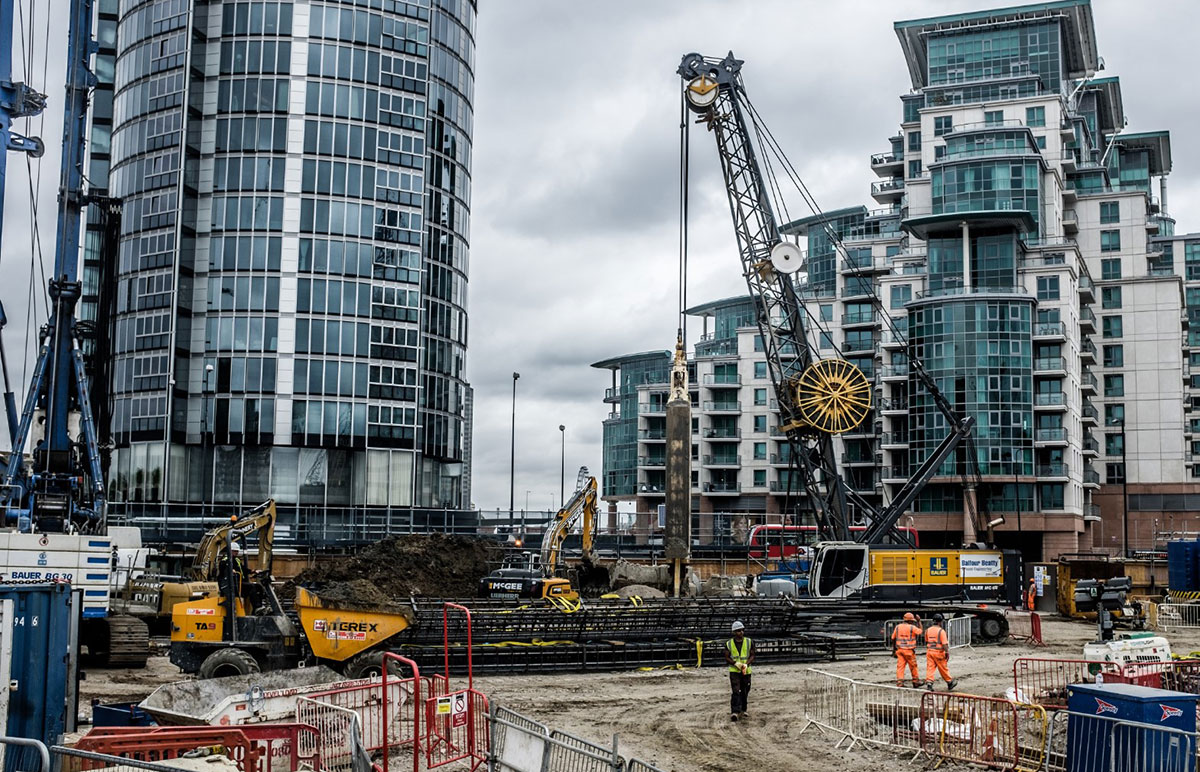The 8-Second Trick For Geotheta
The 8-Second Trick For Geotheta
Blog Article
Not known Incorrect Statements About Geotheta
Table of ContentsThe Facts About Geotheta UncoveredGeotheta Things To Know Before You Buy6 Easy Facts About Geotheta DescribedUnknown Facts About Geotheta
They team up with civil designers, architectural designers, architects, and various other experts to integrate geotechnical factors to consider into the total job design and building process. This requires reliable team effort, sychronisation, and interaction to ensure that the geotechnical facets straighten with the job objectives and meet governing needs.Mining & Products Engineering: Principles of exploration, penetration prices, and aspects influencing the selection of boring approach. Characteristics of nitroglycerins, firing systems and blast patterns. Blowing up methods in surface and below ground operations. Special blowing up techniques at excavation perimeters. Resonance and noise control. Mechanical and continuous methods to fragmentation, including longwall shearing and fullface boring.
Modelling of piece and bit size distributions; comminution as a transfer feature. Comminution innovation: crushing, grinding, dimension category. Integrated analysis of fragmentation and comminution procedures. Supplied by: Mining & Materials Engineering.
The 10-Minute Rule for Geotheta
Bachelor's degree programs in civil, geotechnical, geological, and ecological design usually last 4 years and include general education and learning training courses in English, social science, and the humanities, as well as training courses in sophisticated mathematics, architectural geology, and liquid mineralogy. (https://experiment.com/users/geotheta)
Geotechnical engineering includes the analysis of the soil and rock conditions at a certain website, and their ramifications for the advancement of that site. As many frameworks depend on the ground for assistance, it is without surprise that a detailed understanding of the ground conditions, and the suitability of structure systems, are essential to the long-term stability and performance of the structure or structure.
Specialising in the examination of geological formations and ground practices, geotechnical designers do scientific examinations and screening to comprehend the impact these geological developments may have on the layout and building and construction of structure, civil and facilities tasks. This competence is important for the style and construction of buildings, roadways, tunnels, dams, bridges, and water supply and sewer systems.
The geotechnical team at Douglas Allies regularly speak with designers, layout engineers, programmers, and building contractors to make recommendations on layout and development propositions to guarantee that the constructed structures are suitably designed for the ground conditions. For example, the design of footing systems needs to take into consideration the weight of the framework, the ability of the ground to support that weight along with movement tolerances and reliable building.
Geotheta Fundamentals Explained
This job is greatly simplified by the use of our Douglas Map geospatial system that makes this information readily accessible in an easy to use internet browser user interface. A geotechnical engineer will certainly direct the boring of boreholes and examination pits to accumulate dirt and other examples, and additionally examine surface area functions and ground direct exposures to develop a geotechnical model of the subsurface problems.
Depending upon the project type and ground problems experienced, lab testing may to name a few things examine toughness, compressibility, reactivity and/or leaks in the structure of dirt and rock samples. Hereafter information is accumulated and collated, the outcomes are utilized for a geotechnical model of the site, which is typically offered as sections across the website.

A geotechnical examination naturally can only examine the ground problems at the locations pierced or excavated. Natural variants in soil and rock conditions can happen throughout a website and between examination areas. It is therefore excellent practice that the geotechnical designer be kept throughout building of the job to supply on-site verification that the ground problems come across follow the assumptions and suggestions provided in the geotechnical examination record.
Not known Incorrect Statements About Geotheta
Geotechnical designers utilize their extensive knowledge of dirt and rock to evaluate threat and fix issues on diverse infrastructure projectsGeotechnical engineering is a specialist branch of civil engineering which looks at the behaviour of earth products and the application of dirt and rock mechanics. Engineer of Record. As a geotechnical engineer, you will certainly examine the physical, mechanical and chemical residential or commercial properties of dirt and rock in order to design structures, keeping structures and earthworks
Geotechnical design is closely connected to and overlaps with, both engineering geology and ground design - https://www.ted.com/profiles/47432098. It's feasible to be experts in geotechnics or work for a geotechnical business however be recognized as a design rock hound or a ground designer. As a geotechnical engineer, you'll need to: build and preserve relationships with clients and various other specialists entailed in the site, throughout each projectmaintain security criteria on website be mindful of expense implications when you make recommendationsstudy geological maps and aerial pictures from a range of resources and from different time periodsexamine construction prepares to see just how possible they are based on your understanding of the siteinvestigate dangers or geological dangers for the sitesearch for environmentally delicate attributes, such as garbage dump beginning to develop valid and interpretive ground modelsplan area investigationsdrill and analyse examples of bedrock, soil, groundwater and extra products monitor various other experts on sitesolve technological issues as they emerge, such as unexpected frameworks at drill sitesmonitor problems during and after building to make certain structures are secure in the short and long termadding data accumulated on website to your preliminary researchcreating geotechnical calculations, illustrations, and two or three-dimensional computer system models translating the datamaking referrals regarding the recommended use of the website

Report this page